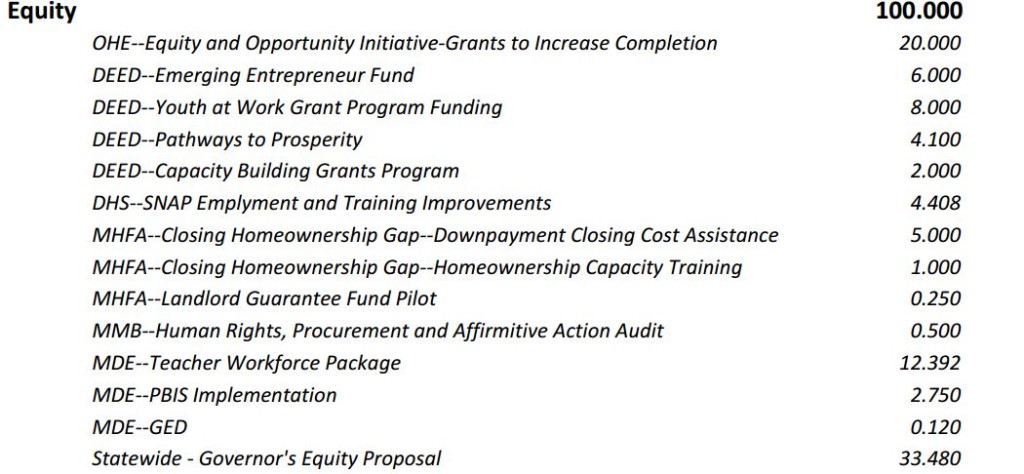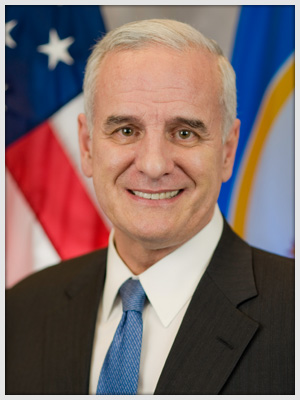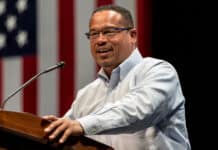Last week Governor Dayton released his proposed supplemental budget, calling for $698 million in new spending to be taken from the state’s roughly $900 million surplus. Specified in the $698 million, Dayton is proposing $100 million for “equity” programs. What does this mean and where will this money be spent?
Racial equity is a hot button issue being pushed by Black Lives Matter, Minnesota Neighborhoods Organizing for Change, and Minneapolis NAACP among others, but according to these groups change has not been achieved. The Star Tribune reports that each of these groups were able to voice their concerns to Dayton in the months leading up to the release of his proposed supplemental budget.
Included in Dayton’s proposal is funding for the Department of Human Rights, a statewide agency that addresses racial discrimination, workforce training, capital infusions to help businesses, and “equity and opportunity” grants. Of the proposed $100 million to be spent on equity programs, roughly $33 million would be at the discretion of the legislature. A clear depiction of Dayton’s proposed method of allocating funds can be seen below (numbers in the millions).

DFL Representative Carlos Mariani (District 65B) called Dayton’s proposal the “largest major action ever taken by a Minnesota Governor to address huge, systemic racial disparities, with state investment.”
Echoing Mariani’s statement, DFL Senator Foung Hawj (District 67) also offered his support of Dayton’s proposal, stating: “I applaud Governor Dayton’s emphasis on prioritizing the need to address racial disparities in Minnesota.” “I’m confident that we’ll see the progress we’ve been working toward. It should be our common interest to build an economy that works for all Minnesotans especially the most vulnerable” added Hawj.
Republicans are more focused on the supplemental budget as a whole, rather than the equity component specifically. Speaker of the House of Representatives, Kurt Daudt, voiced his dissatisfaction with the proposed supplemental budget, asserting, “he’s proposing to spend about $7 for every $1 he’s giving back in tax relief – obviously out of whack with what I think Minnesotans’ expectations are.”
From Daudt’s statements it is clear that there is a fundamental disagreement between the parties as to how the budget surplus should be spent: large tax cuts vs. government programs aimed at solving specific problems.
The likelihood that all of proposed funding actually gets appropriated is highly unlikely, given that the state senate and house of representatives remain politically divided. The senate and house of representatives will take up components of Dayton’s proposal in the months to come. Subscribe to Alpha News to remain updated on government spending and state fiscal forecasts.












